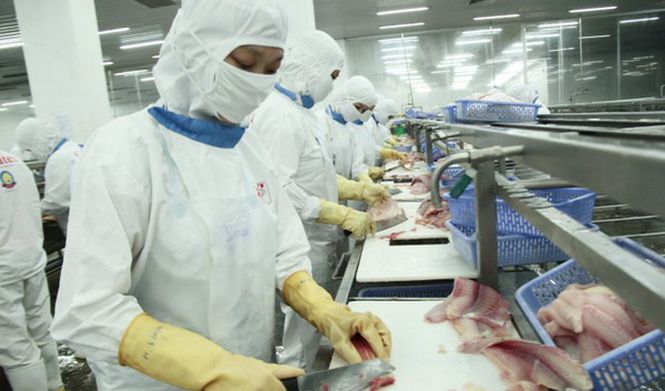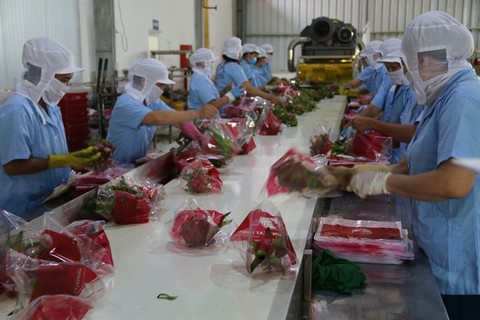Samsung: a journey of initiative and innovation
Samsung: a journey of initiative and innovation
With huge investment capital and a significant impact on local socioeconomic development, Samsung Group has proved to be a giant in the Vietnamese market.
Visiting Samsung’s complexes in the northern provinces of Bac Ninh and Thai Nguyen, and Ho Chi Minh City, people are surprised by the enormity of their scale. A few foreign investors in Viet Nam are able to invest in such modern and colossal complexes as Samsung.
Starting investment in Viet Nam with a medium-d project, Samsung developed step-by-step from focusing on simple assembly at first to investing in mammoth facilities producing mobile devices.
Now, Samsung has three of the largest-ever high-tech manufacturing complexes in the northern provinces of Bac Ninh and Thai Nguyen, and Ho Chi Minh City, turning Viet Nam into the group’s global production base.
Not counting Samsung Vina, the first small-scale project Samsung invested in Viet Nam 20 years ago, 2018 will mark the company’s 10-year investment anniversary in Viet Nam.
Back in March 2008, Samsung Electronics Viet Nam (SEV) received the investment certificate to invest in its facility in Bac Ninh. The project was quickly kicked off and put into operation in April 2009.
Over the past years, Samsung has made quick leaps ahead in Viet Nam. In late 2012, Samsung increased its initial investment capital from $670 million to $1.5 billion. Its export turnover broke records with $12.72 billion that year, up from $245 million in the first year of operation in the country.
By expanding its businesses in Viet Nam, Samsung’s total investment here now totals $17.3 billion, an over ten-fold increase since 2012.
In Bac Ninh, together with the $2.5-billion SEV complex, Samsung Display has invested $6.5 billion, while Samsung SDI - despite its smaller investment capital of $133 million - plays an important role in producing almost all of the batteries in Samsung’s mobile phone devices across the globe.
In Thai Nguyen, next to the $5-billion Samsung Electronics Vietnam Thai Nguyen (SEVT) complex, Samsung Electro-Mechanic Vietnam hit $1.23 billion in total investment capital. Meanwhile in Ho Chi Minh City, the expired Samsung Vina facility was replaced by Samsung Electronics Ho Chi Minh Complex (SEHC), which has total investment capital of $2 billion.
When SEV was put into operation, it had a single factory. By now, a complex of factories is in operation, manufacturing mobile phone devices and spare parts. SEVT is even more modern and bigger than SEV, looking like a high-tech city in Thai Nguyen.
SEHC is on a whole different scale and technological level than Samsung’s previous television manufacturing plant in Thu Duc district of Ho Chi Minh City. The large manufacturing buildings were constructed on a 94-hectare area, and according to Samsung, all production lines are the most modern available and were freshly imported for the production of high-end product lines, such as TV SUHD, Smart TV, and LED TV.
With the expansion of the scale of operations, the number of employees has increased as well, to more than 160,000, making up over 30 per cent of Samsung’s total global workforce.
Not only making bold steps in investment activities, Samsung has also been reporting sky-rocketing export turnover.
In 2012, Samsung’s export turnover was $12.72 billion, which was considered an amazing figure at the time, although being less than half of the $26.2 billion in 2014 and only one-third of the $36.2 billion in 2016. These figures were contributed by SEV and SEVT only. If all of Samsung’s Vietnamese production complexes were included, the value would be $40.05 billion last year.
In the first nine months of this year, Samsung’s export turnover reached $38.1 billion and is forecast to surpass the $50 billion-mark estimated earlier this year. This figure is expected to definitely make up at least 25 per cent of Viet Nam’s total export turnover.
An exemplary case of FDI attraction
Samsung has become an iconic success story in foreign direct investment (FDI) attraction in Viet Nam not only because of its huge investment capital and quick and efficient development, but also its wide and deep impact on local socioeconomic development.
Looking back in April 2009 when Samsung put into operation its $67-million mobile phone facility, it was praised as a model of FDI attraction as at the time Samsung was among the few high-tech giants choosing Viet Nam, following the “push” of Intel.
The group’s huge investment has attracted satellite investors and investment in research and development (R&D) activities, while creating jobs for locals, contributing to increasing Viet Nam’s export turnover and state budget revenue, as well as bringing valuable opportunities to join the global value chain.
Samsung now has an R&D centre named Viet Nam Mobile Research and Development Centre (SVMC) in Ha Noi which employs 1,600 Vietnamese engineers. The number of satellite businesses entering Viet Nam to serve Samsung’s increasing demand has also rose rapidly with total investment reaching billions of US dollars, contributing to the development of the local supporting industries for the electronics sector.
In addition, Vietnamese firms joining Samsung’s global value chain have continued growing at an astounding pace. The number of Tier-1 and Tier-2 vendors is 220 at present. The localisation rate of SEV and SEVT has reached 57 per cent.
Samsung’s investments and wide impact on the Vietnamese socioeconomic development is obvious evidence for the mutual benefits enjoyed by both sides that the Vietnamese government has been targeting.
Samsung’s investments boosted socioeconomic development in Thai Nguyen and Bac Ninh by a significant degree. Samsung accounted for 99 per cent of Thai Nguyen’s and 75 per cent of Bac Ninh’s total export turnover.
Although the group’s contribution to the state budget remains lower than what is coined desirable as it is still enjoying the period of tax reduction and exemption, the annual amount of $800 million that Samsung pays for Vietnamese labourers has helped improve the life of more than 100,000 local households.
Samsung has also brought about business opportunities for small Vietnamese traders. According to Samsung, the group buys 16.9 tonnes of rice, 20.1 tonnes of vegetables, 11 tonnes of meat and fish, 10.5 million tonnes of water melons, and 30,979 eggs each day.
Samsung’s foothold in Viet Nam will be further strengthened when all of its registered capital is disbursed. Currently, there remains around $5 billion that has yet to be disbursed. The group even plans to make more investments in Viet Nam. Sectors of special interests include energy, shipbuilding, and aviation. When these plans are realised, Samsung’s contribution to the Vietnamese economy will be even larger.



















